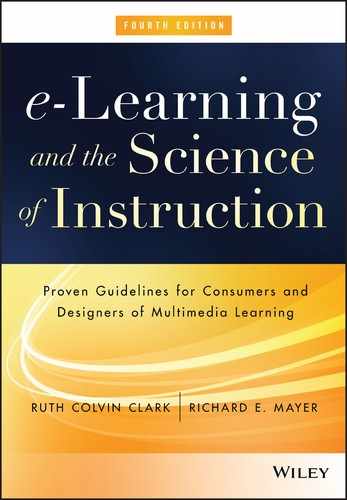CHAPTER 11
Engagement in e-Learning
CHAPTER SUMMARY
Although it is at the heart of all learning, engagement may not be as straightforward as it seems. We distinguish two forms of engagement: psychological and behavioral. Behavioral engagement refers to overt actions taken by a learner during a lesson intended to improve learning. Examples include hands-on activities in an interactive lesson that require learners to click on objects, drag-and-drop objects, or produce text. Some forms of behavioral engagement, such as generating a graphic organizer while reading a scientific passage, have been shown to depress learning compared to lower engagement assignments, such as studying an instructor- prepared graphic organizer while reading a scientific passage. Perhaps learners lack the knowledge to accurately generate an effective graphic organizer. In some situations, engaging in behavioral activities may add extraneous cognitive load that distracts learners’ limited mental resources from the learning goals.
Psychological engagement promotes learning that helps learners to achieve the instructional goal by engaging in relevant cognitive processing during learning—such as attending to the relevant material, mentally organizing it into a coherent structure, and integrating it with relevant prior knowledge. Psychological engagement can occur with or without behavioral engagement. In this chapter we review methods that promote relevant psychological engagement.
This is a new chapter we add to this fourth edition to lay the foundation for the chapters to follow on engagement methods in e-learning. Two main themes emerge from the evidence in this chapter. First, it is psychological not behavioral engagement that leads to learning. Second, effective behavioral engagement (behavioral engagement that fosters psychological engagement) often requires instructional support to guide the learner’s responses.
What Is Engagement?
Imagine learning electro-mechanical principles with the game shown in Figure 11.1. The game requires the learner to search for lost World War II art in bunkers. To open doors and proceed down hallways, the learner must apply the lesson principles to activities such as creating a wet cell battery. These principles are explained on the smart device shown in the right hand side of the screen. In contrast, imagine learning the same content from a slide presentation. Which environment is more engaging? Which would lead to better learning? Which would take longer to complete? Adams, Mayer, MacNamara, Koenig, and Wainess (2012) compared test scores and learning time for the two versions. They found that both the game and the slide-presentation groups learned, but the slide group actually learned more! You won’t be surprised to read that the game group took over twice the time to complete the lesson. The research team tested two different games and concluded that: “Our results show that the two well-designed narrative adventure games we used in this study were less effective than corresponding slideshows to promote learning outcomes based on transfer and retention of the games’ academic content” (Adams, Mayer, MacNamara, Koenig, & Wainess, 2012, p. 246).

Figure 11.1 A Narrative Game for Learning Electro-Mechanical Principles. .
From Adams, Mayer, MacNamara, Koenig, and Wainess, 2012
Are you surprised to see that a slide show resulted in better learning than a high engagement game? We will discuss games in more detail in Chapter 17. Our focus in this chapter is not on games per se but on the conditions under which engagement activities are and are not effective for learning. In Chapter 1 we introduced the idea that e-learning offers a variety of opportunities for engagement, including traditional formats such as multiple choice as well as more recent methods such as simulations and games. We begin with a definition of engagement and an introduction to the engagement grid.
Engagement is at the heart of all successful learning episodes. We define engagement as meaningful psychological interaction between the learner and the instructional environment that promotes the achievement of the learning goal. Engagement may support building relationships between new content and prior knowledge and/or among content elements in the lessons. Fiorella and Mayer (2015) have written a book called Learning as a Generative Activity. In the book they summarize eight evidence-based engagement strategies that promote generative learning. We summarize these strategies in Table 11.1. As you can see, each strategy involves a learner activity, although some activities such as imagining or self-testing may occur in the absence of overt physical activity.
Table 11.1 Eight Generative Learning Strategies.
| Strategy | Description |
| Summarizing | You create a written or oral summary of the material in the lesson. |
| Mapping | You create a spatial representation of the key ideas in the lesson. |
| Drawing | You create a drawing that depicts the key material in the lesson. |
| Imagining | You imagine a drawing that depicts the key material in the lesson. |
| Self-Testing | You give yourself a practice test on the material in the lesson. |
| Self-Explaining | You create a written or oral explanation of portions of the lesson that you identify as confusing. |
| Teaching | You explain the material in the lesson to others. |
| Enacting | You act out the material in the lesson. |
Fiorella and Mayer, 2015.
To help us interpret evidence on the benefits of different engagement methods, let’s consider two forms: behavioral and psychological engagement. By behavioral engagement we mean any overt action by the learner during learning, such as creating a written or oral summary of lesson material or creating a written or oral explanation of portions of a lesson identified as confusing. In e-learning behavioral engagement may involve clicking on a screen object, contributing to an online discussion, writing in a textbox, underlining text, and playing a game, such as the one shown in Figure 11.1.
In contrast, psychological engagement refers to mental activity that promotes achievement of the learning objective, including attending to the relevant material, mentally organizing the material into a coherent structure, and integrating it with relevant prior knowledge. Psychological engagement may or may not be accompanied by behavioral engagement. We have tried to write this chapter in a way so that you are psychologically engaged while reading it. You may or may not be behaviorally engaged while reading with overt activities such as underlining important sentences, taking notes, or discussing concepts with a colleague. Take a look at Figure 11.2 to view the relationship between behavioral and psychological engagement.
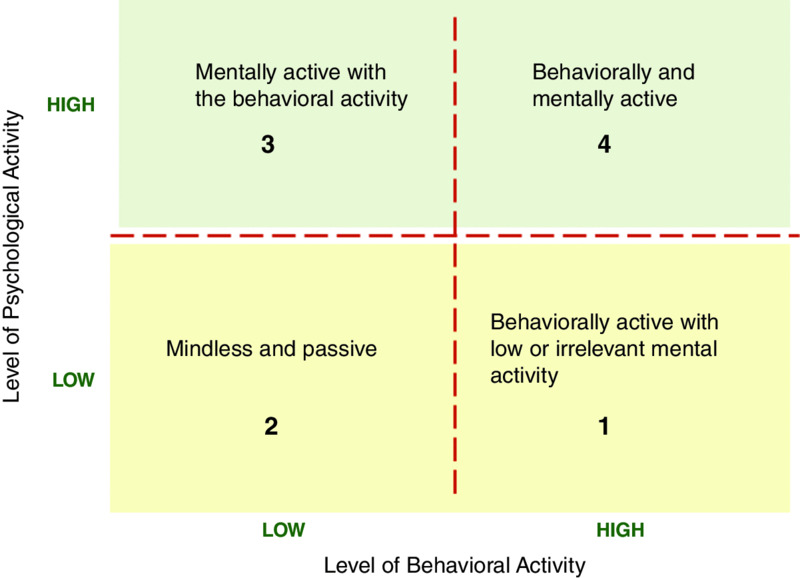
Figure 11.2 The Engagement Grid. .
Adapted from Stull and Mayer, 2007
Four Quadrants of Engagement
As you can see in Figure 11.2, Quadrant 1 includes activities that are high in behavioral engagement but low in relevant psychological activity. We classify the game shown in Figure 11.1 into Quadrant 1. Learners were behaviorally active playing the game but, in fact, some of that activity interfered with learning compared to individuals who viewed slides (a Quadrant 3 activity). Quadrant 2 represents what we call couch potato mode. Here we see minimal physical and psychological activity. This quadrant may not lead to conscious learning but may be beneficial as down time. Meditation is an example of a Quadrant 2 activity.
Moving to the upper levels, in Quadrants 3 and 4 we classify instructional methods that induce appropriate psychological engagement either without (Quadrant 3) or with behavioral activity (Quadrant 4). Reading for meaning is a Quadrant 3 activity, while completing a practice exercise that promotes achievement of the learning objective would fall into Quadrant 4.
When Behavioral Engagement Impedes Learning
It’s a common myth that learners must be behaviorally active on a regular basis during learning and that behavioral engagement always translates into learning. Consider the following scenario. Three groups of learners are assigned a science reading. One group is asked to create graphic organizers as they read. The second group is provided the graphic organizers already completed by the text author. A third group reads the text with no organizers. Which group is behaviorally engaged? Which group would learn more?
Stull and Mayer (2007) conducted this experiment three times and found that learners provided with the author-completed graphic organizers learned more. They conclude that “increased physical activity on the part of the learner (for example, producing graphic organizers) should not be interpreted to indicate deeper learning” (p. 818). Why did the learners assigned a behavioral activity learn less? Perhaps they lacked sufficient background knowledge to produce accurate organizers. Perhaps the act of creating organizers while trying to construct meaning from the text led to extraneous cognitive load, which interfered with learning the core material.
Similar results have been reported with two other common behavioral engagement activities—generating summaries and underlining text. Leopold, Sumfleth, and Leutner (2013) compared learning from science text among learners who generated summaries to learning by individuals provided with a predefined summary. Summaries were generated or provided in two formats: text and graphic. Therefore the experiment tested four conditions: provided or generated graphic summaries and provided or generated text summaries. You can see the results of this experiment in Figure 11.3.
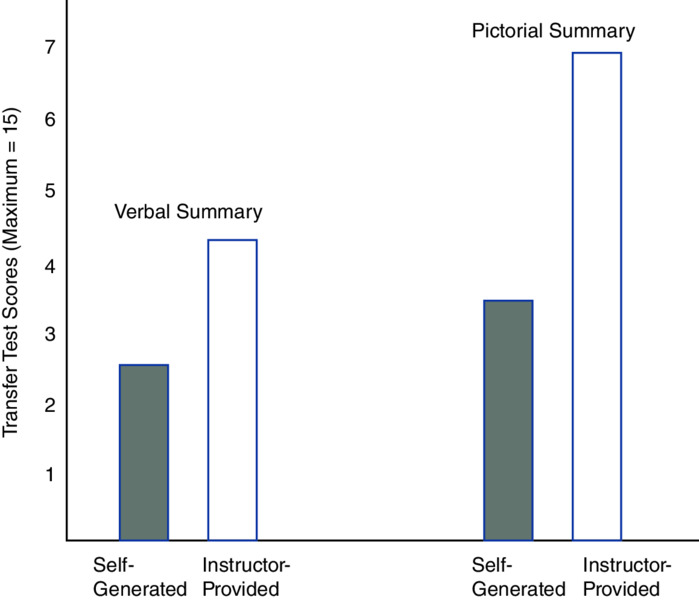
Figure 11.3 Learning from Verbal and Pictorial Summaries, Either Student-Generated or Instructor-Provided. .
Adapted from Leopold, Sumfleth, and Leutner, 2013
As you can see, students in the pictorial summary groups learned best—another confirmation of the multimedia principle we discussed in Chapter 4. In addition, providing predefined summaries was more effective in either text or graphic modality than asking learners to construct their own summaries. As in the graphic organizer study summarized previously, it is possible that learner-generated summaries were not as accurate as instructor-provided summaries and that generating summaries resulted in extraneous cognitive load. In some cases, however, writing summaries while reading text or watching a lecture can lead to better learning than no activity, presumably because it fosters psychological engagement as well (Fiorella & Mayer, 2015).
Have you ever underlined or highlighted text? This common learning activity has also been found to have limited benefits for many of the same reasons we’ve reviewed in the preceding paragraphs (Dunlosky, Rawson, Marsh, Nathan, & Willingham, 2013).
In summary, evidence suggests that some common behavioral engagement activities may actually depress relevant psychological activity, often by imposing extraneous cognitive load or by relying too much on learner ability to understand the content. What kinds of instructional methods have been shown to result in effective psychological engagement that translates into learning? We turn to this question in the next section.
Engagement That Leads to Generative Processing
Recall that generative cognitive processing involves psychological engagement that promotes achievement of the learning objectives by fostering appropriate cognitive processing during learning. Some methods we review here include: (1) including graphics with text (per the multimedia principle); (2) asking learners to engage in supported drawing; (3) assigning collaborative observations of tutoring; (4) asking learners to teach others (also called teach-backs); (5) asking learners to make self-explanations; and (6) asking learners to answer relevant questions. Some of these techniques were tested in traditional instructional contexts that did not involve e-learning. For those experiments, we suggest ways these methods could be adapted to multimedia instruction.
Relevant Graphics
We reviewed evidence for the instructional value of relevant graphics in Chapter 4. Butcher (2006) found that adding graphics to a textual description of how the heart circulates blood resulted in better learning compared to text without graphics. As students studied either text alone or text with graphics, they were asked to voice aloud their thoughts. These were recorded, transcribed, and coded. One coding category was inferential comments that connected and extended ideas stated in the lesson. For example, one section of text stated: “As the blood flows through the capillaries in the body, carrying its supply of oxygen, it also collects carbon dioxide. The blood that empties into the right atrium is dark colored. It has picked up carbon dioxide from the body cells.” Based on this text, one student made the following inference: “The blood is dark because of the carbon dioxide. Oxygen probably enriches the red color of the blood” (Butcher, 2006, p. 196). Note that inferences are not restatements or paraphrases of the text, but actually reflect new information the learner has derived. Figure 11.4 summarizes the percentage of statements that included productive inferences among the three lesson versions. As you can see, learners make more inferences during learning—indicating generative processing—when the text is accompanied by graphics, especially simpler graphics.

Figure 11.4 Proportion of Productive Inferences Generated from Three Lesson Versions. .
Based on data from Butcher, 2006
We have many studies showing the learning benefits of relevant graphics. What about asking students to provide their own drawing as they read text? Would student-generated drawing be effective or would the activity depress learning due to cognitive overload? We turn to evidence on this type of engagement next.
Supported Drawing
Several studies have shown that asking learners to draw relevant visuals from scratch based on their interpretation of text is not effective for learning. As we saw with generation of summaries and organizers, it is likely that students did not create accurate drawings or that drawing with no support resulted in extraneous mental load. Better results have emerged from a technique called supported drawing. Schwamborn, Mayer, Thillmann, Leopold, and Leutner (2010) assigned a 1,000-word science text explaining the chemistry of cleaning with soap and water. Learners in the supported drawing condition were asked to assemble a drawing by selecting and placing premade objects onto a provided background, as shown in Figure 11.5. Those assigned to the supported drawing condition scored 28 percent on a transfer test, compared to 12 percent among individuals who did not draw. Not surprisingly, there was a positive correlation between drawing accuracy and learning outcomes. This research shows that drawing can lead to psychological engagement as long as the mechanics of drawing do not overwhelm the learning with extraneous cognitive load—such as through supported drawing.
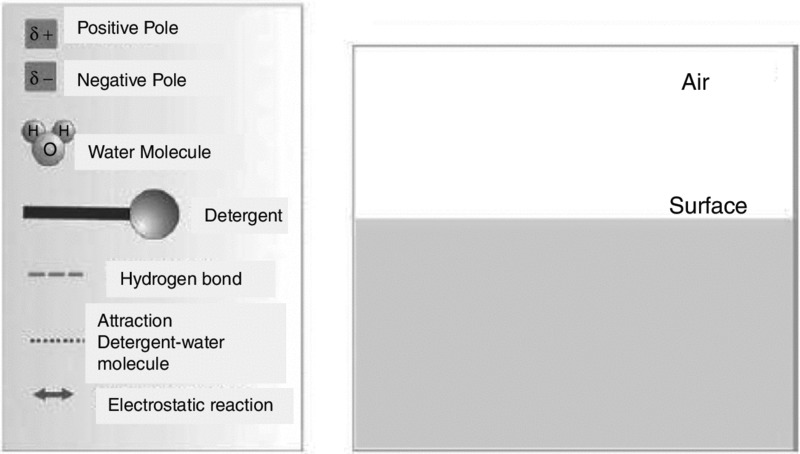
Figure 11.5 Elements Provided for Supported Drawing. .
From Schwamborn, Mayer, Thillmann, Leopold, and Leutner, 2010
Based on evidence to date, we recommend that you promote engagement with drawings by asking learners to generate drawings from provided elements. This could be implemented with a drag-and-drop technique in e-learning.
Collaborative Observations of Skill Tutoring
One-on-one human tutoring is often considered the optimal instructional approach. However, the low ratio of instructor to student makes tutoring an expensive instructional method. Is it possible that learning could occur by observing others being tutored? Muldner, Lam, and Chi (2014) compared university students (Experiment 1) and middle school students (Experiment 2) learning the science concept of diffusion from three instructional approaches: (1) one-on-one human tutoring, (2) collaborative observation of videotaped one-on-one tutoring of another student, or (3) collaborative observation of a lecture. The instructional materials included a two-page text, two simulations, a workbook with seven problems, and videos showing either a tutorial dialog with a student or a lecture. In the tutorial dialog video, the tutor helps the student answer the workbook problems. The video lectures reviewed the workbook problems on a whiteboard. Subjects in the observational condition worked in pairs to complete workbook problems while observing either the tutorial dialog video or the lecture video. Those in the tutoring condition worked the problems with the help of an individual tutor. The learning outcomes in gain scores are shown in Figure 11.6.
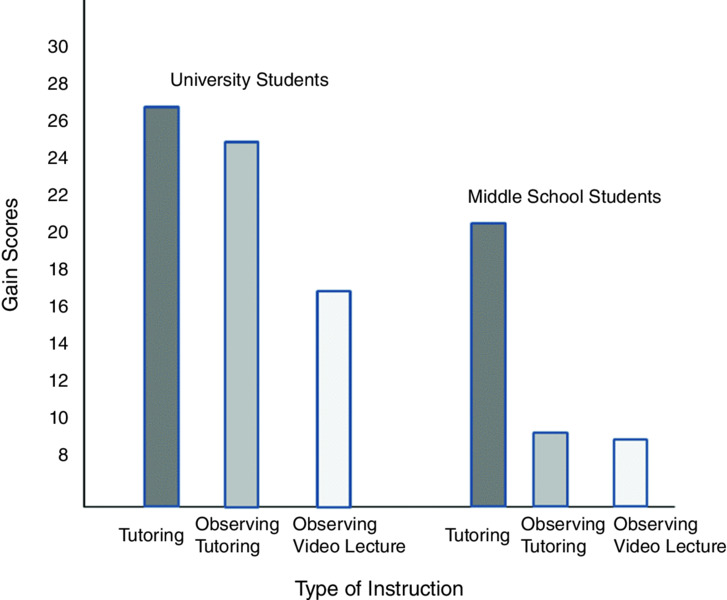
Figure 11.6 Gain Scores for One-on-One Tutoring, Observing Tutoring, or Observing a Lecture Among University or Middle School Students. .
Based on data from Muldner, Lam, and Chi, 2014
As you can see, among university students, there was no significant difference between those receiving one-on-one tutoring and those collaboratively watching others being tutored. However, the outcomes were different for middle school students, who benefited most from individual tutoring. The research team concluded that for the older population, collaborative observation of a tutoring session offers higher overall utility than does one-on-one tutoring. The technique is more scalable and easy to implement. Younger students did not do so well because their collaborative activities were not as focused as those of older students.
From this research we can derive a potentially cost-effective approach to learning problem-solving skills. The technique could be adapted to e-learning by using a recorded video or animation of tutoring and asking learners to solve problems collaboratively. Alternatively, consider including tutor- student tutoring dialogs using avatars in place of actual tutors and students. The Muldner, Lam, and Chi (2014) research relied on face-to-face collaboration. We need more research to determine whether online collaboration, either by synchronous or asynchronous methods, would produce similar outcomes. We classify this method into Quadrant 4 of the engagement grid (Figure 11.2), as learners were behaviorally active collaboratively solving workbook problems as they viewed the tutoring video.
Peer Teaching
You’ve probably noticed that you really learn a skill or content when you have to teach that skill or content. As an instructor, designer, or student you have no doubt participated in activities that involved teach-backs. It’s common to assign team or individual student presentations as a class activity. Is peer teaching an effective approach to learning? Fiorella and Mayer (2013) compared three approaches to learning the Doppler Effect. The control group was told they had ten minutes to study the lesson and then would take a test. Two other groups studied the same lesson and were told they would teach the material by presenting a brief lecture that explained how the Doppler Effect works. One of these two groups actually did give a videotaped lecture before taking the test. The other group, which had prepared for teaching, did not actually teach prior to being tested. Testing was completed immediately after each study activity as well as one week later. You can see the results of the delayed test in Figure 11.7. As you can see, preparing to teach and actually teaching the material in the lesson resulted in better learning than simply reading the lesson in preparation of a test. The research team concludes that it is not sufficient to prepare to teach, but the combination of preparation and actual teaching can yield better long-term understanding.
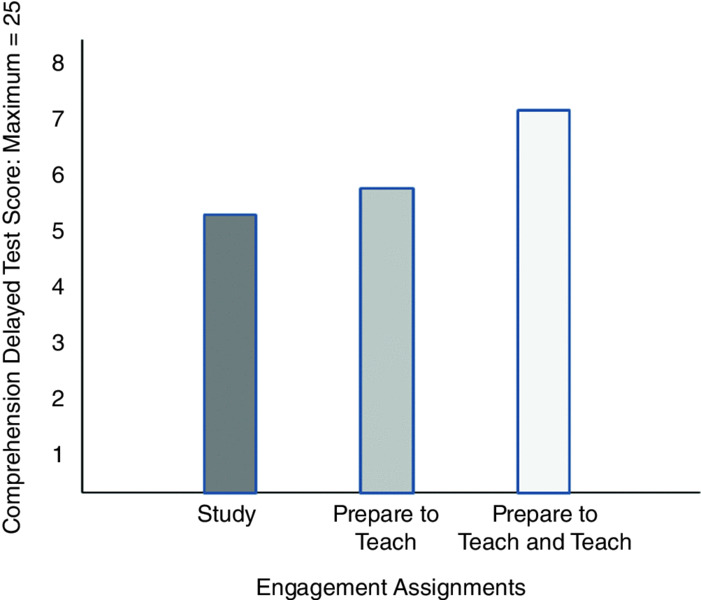
Figure 11.7 Learning from Preparing to Teach Versus Preparing to Teach and Teaching. .
Based on data from Fiorella and Mayer, 2013
In synchronous e-learning sessions, you can ask learners to prepare and present relevant course topics to their peers. Although in the Fiorella and Mayer research the learners’ teaching activity was oral, you might obtain similar benefits by asking students to post explanations in an asynchronous format. Alternatively, you might ask learners in asynchronous e-learning to prepare a lesson and then “teach” it to an on-screen avatar. Note that, in the Fiorella and Mayer research, teaching involved recording a video presentation—no students were actually present to ask questions. Future research would be useful to determine the effects of teaching in the presence of other students.
Prompted Self-Explanations
A self-explanation question asks the learners to explain the concepts or principles to themselves as they read or view a lesson. A review by Dunlosky, Rawson, Marsh, Nathan, and Willingham (2013) concludes that self- explanations can be effective, but we need more research on the effects of self-explanation questions. For example, they note that positive effects diminish when learners can access the explanations as feedback. As an example, Schworm and Renkl (2007) asked student teachers to study examples of well-designed and poorly designed example problems. One group was asked to explain why one of the two examples was more effective than the other. Half of the participants in the group were also given the option to examine provided self-explanations as feedback. They found that the self-explanation group outperformed the control group that had no self-explanations, but only when they did not have access to provided explanations as feedback. Knowing they could easily access solutions to self-explanation questions, many learners invested minimal effort to construct their own self-explanations. The bottom line is: Do not provide immediate feedback to self-explanation assignments.
Evidence has shown self-explanations to be effective in diverse domains, including solving puzzles, math problems, algebraic formulas, evaluation of products, and chess plays, to name a few. Most of the research measured immediate learning benefits only, so we lack data on the durability of self-explanation questions. Based on evidence to date, we recommend using self-explanations of instructional elements such as examples, diagrams, simulations, and games, to name a few. In Chapters 12 and 17 we review evidence on the use of self-explanations with examples and games, respectively.
Asking Questions During Explanations
Have you ever inserted questions into a didactic explanation? In the classroom, clickers (response technology) are a common method to add engagement to lectures. In e-learning, inserting multiple-choice questions would serve a similar purpose. Several studies have shown the benefits of using clickers during lectures (Anderson, Healy, Kole, & Bourne, 2013; Mayer, Stull, & others, 2009; Shapiro & Gordon, 2012). Learning benefits have also been realized by including questions designed to induce inferences from written explanations (Roelle, Berthold, & Renkl, 2014). In their study, the research team inserted a notes box next to a technical explanation in the domain of management theory. After a couple of paragraphs of explanation, a question required the learners to type answers into the boxes. The team found that adding effective questions stimulated inferences and led to better learning outcomes. Effective questions should be designed to encourage learners to make inferences from the content presented either in a lecture or reading.
Practice
We define practice as behavioral engagement that initiates appropriate psychological engagement that, in turn, promotes achievement of learning goals. Deliberate practice—which is defined as conscious rehearsal of knowledge and skills that focuses on specific performance gaps typically supported by a coach—is an especially effective instructional approach (Ericsson, 2006). Dunlosky, Rawson, Marsh, Nathan, and Willingham (2013) rate practice as having high utility for learning. What is the best kind of practice to include? How much practice is needed? How should practice be spaced within and among learning topics? We will address these questions in Chapter 13.
A New View of Engagement
Two important themes underlie the research reviewed in this chapter. First, physical activity does not necessarily translate into learning. Conversely, psychological activity in the absence of physical activity can promote learning. Instructional professionals need to decouple the linkage between physical and behavioral engagement and focus primarily on methods that promote relevant psychological engagement. The benefit of combining physical and psychological engagement in Quadrant 4 is a student product that can be evaluated for the purpose of feedback.
A second theme relates to the need for support during engagement in order to minimize extraneous cognitive load. For example, while drawing from scratch after reading text does not generally improve learning, supported drawing does. In supported drawing, elements of the diagram are provided and assembled by the learner. With access to diagram elements, the learner can focus limited cognitive resources on the relationships among the parts. These observations suggest that you design engagement that imposes enough generative processing to promote learning but offers sufficient guidance and structure to minimize extraneous processing.
What We Don’t Know About Engagement
As we discussed in Chapter 3, almost all evidence-based principles have some limitations. Here are a few that we note in the research summarized in this chapter.
- Most of the studies we reviewed used some kind of science topic, including biology, physics, and chemistry. It will be helpful to see whether these results will replicate with soft skills such as sales or management training.
- Most of the research was conducted with low prior knowledge learners. Some of the techniques, such as creating summaries that may overload novices, may in fact benefit learners with greater prior knowledge.
- Some of the results were obtained in traditional classroom environments. It will be useful to determine how these effective techniques can be adapted to e-learning.
Chapter Reflection
- To what extent have you believed that learners must be physically engaged throughout training to learn? How has this chapter shaped your thinking?
- What evidence-based findings surprised you in this chapter?
- As you consider your organization’s e-learning engagement methods, how would you evaluate the strengths and weaknesses based on the What to Look for list in the previous section?
COMING NEXT
One of the most powerful methods you can use to promote learning of skills is worked examples. In a worked example, a skill is demonstrated or illustrated in a step-by-step fashion. While you may have used worked examples in your instruction, often they are not exploited to their full potential. In the next chapter we will review evidence on the benefits and techniques to maximize learning from worked examples.
Suggested Readings
- Dunlosky, J., Rawson, K.A., Marsh, E.J., Nathan, M.J., & Willingham, D.T. (2013). Improving students’ learning with effective learning techniques: Promising directions from cognitive and educational psychology. Psychological Science in the Public Interest, 14, 4–18. This review examines the effects of ten learning techniques and offers suggestions about their relative utility. Although lengthy, the review is easy to read and offers helpful guidance for practitioners.
- Fiorella, L., & Mayer, R.E. (2013). The relative benefits of learning by teaching and teaching expectancy. Contemporary Educational Psychology, 38, 281–288. This research focuses on a common instructional technique: peer teach-backs. Interestingly, the evidence shows that simply preparing to teach is not as effective for delayed learning as preparing and actually teaching.
- Fiorella, L., & Mayer, R.E. (2015). Learning as a generative activity: Eight learning strategies that promote understanding. New York: Cambridge University Press. This succinct book describes and illustrates eight techniques shown to promote effective engagement in diverse delivery media.
- Muldner, K., Lam, R., & Chi, M.T.H. (2014). Comparing learning from observing and from human tutoring. Journal of Educational Psychology, 106(1), 69. This is a report of two experiments that compared learning from one-one-one human tutoring to learning from a video recording of a tutoring session. The research was conducted with a university and middle school audience, achieving different outcomes with each.
- Schwamborn, A., Mayer, R.E., Thillmann, H., Leopold, C., & Leutner, D. (2010). Drawing as a generative activity and drawing as a prognostic activity. Journal of Educational Psychology, 102, 872–879. This research study illustrates the value of supporting learners during generative activities such as drawing.
CHAPTER OUTLINE
- What Are Worked Examples?
- Worked Examples for Strategic Tasks
- Modeling Examples
- The Psychology of Worked Examples
- Evidence for the Benefits of Worked Examples
- How Effective Are Worked Examples?
- Should Worked Examples Be Paired with Problem Assignments?
- Principles to Optimize Benefits of Worked Examples
- Principle 1: Provide Worked Examples in Lieu of Problem Assignments When the Essential Load of the Lesson Is High
- Principle 2: Fade from Worked Examples to Problems
- Principle 3: Promote Self-Explanations
- Add Self-Explanation Questions to Your Worked Examples
- Assign Example Comparisons
- Encourage Self-Explanations Through Active Observation
- Principle 4: Include Instructional Explanations of Worked Examples in Some Situations
- Principle 5: Apply Multimedia Principles to Examples
- Multimedia Principle: Illustrate Worked Examples with Relevant Visuals
- Modality and Redundancy Principles: Present Steps with Audio. NOT Audio and Text
- Contiguity Principle: Present Steps with Integrated Text
- Segmenting Principle: Present Steps in Conceptually Meaningful Chunks
- Principle 6: Support Far Transfer
- Far Transfer Guideline 1: Use Varied Context Worked Examples
- Far Transfer Guideline 2: Include Self-Explanation Questions
- Far Transfer Guideline 3. Require Active Comparison of Varied Context Examples
- What We Don#x2019;t Know About Worked Examples
